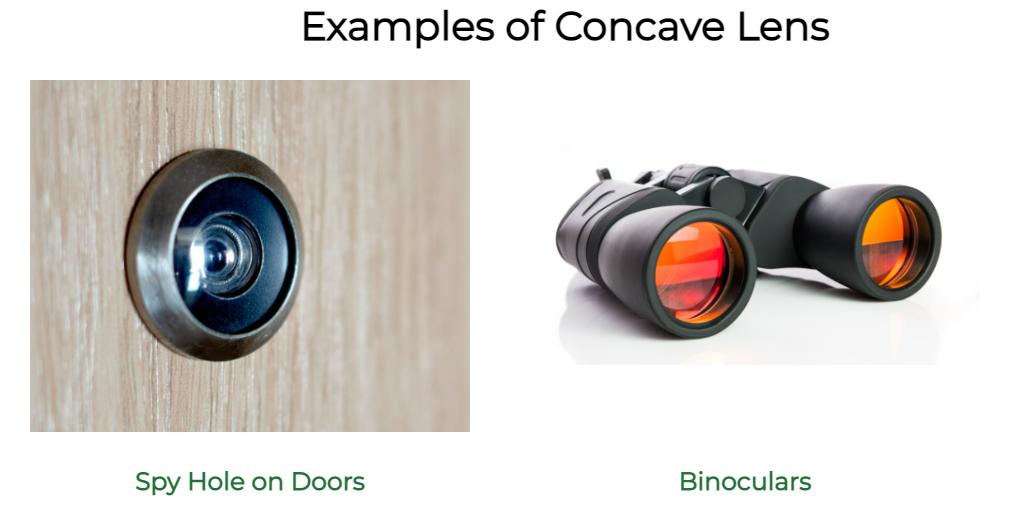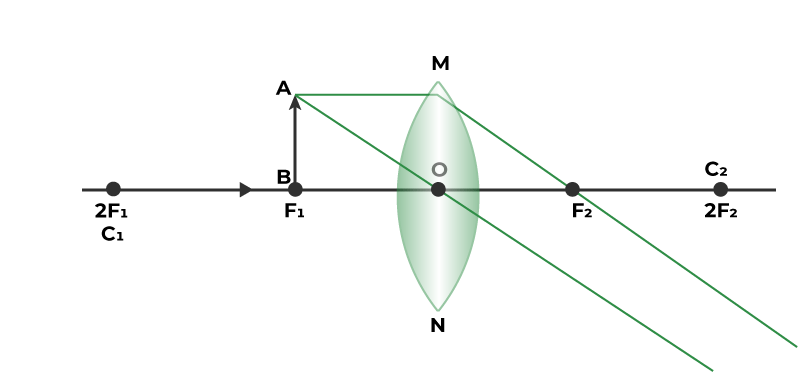
|
|
In optics, a ray is a geometrical representation of the light that is idealized by choosing a curve that is perpendicular to the wave fronts of actual light and points in the energy flow direction. Rays are used to represent the propagation of light through an optical system by separating the real light field into discrete rays that can be computationally carried through the system using ray-tracing techniques. This makes it possible to investigate or simulate even the most complex optical systems mathematically. Ray tracing is based on approximate solutions to Maxwell’s equations that hold true as long as light waves flow through and around objects with dimensions significantly greater than the wavelength of the light. Diffraction, for example, necessitates the study of wave optics, which is not addressed by ray or geometrical optics. Adding phase to the ray model can be used to describe wave phenomena such as interference in some instances. What are Lenses?
Lenses are often made of a thin piece of glass or plastic. Binoculars, telescopes, vision-correcting spectacles, torches, and microscopes are just a few examples. Types of LensesDepending on whether light rays are converging or diverging, there are two types of lenses. There are two types of lenses:

Concave lensThe lens which is thicker at the end than the middle is called the concave lens. It is also called diverging lens as it spreads out the light rays that have been refracted through it. It has the ability to diverge the parallel beam of light. A common application of concave lenses is that they are used in optical devices such as binoculars, telescopes, eyeglasses, spy holes in doors, etc. 
Convex lensThe lens which is thicker at the middle than the end is called a convex lens. It is also called a converging lens as it converges the parallel beam of light into a point. A common application of convex lenses is that they are used in optical devices such as microscopes, telescopes, eyeglasses, magnifying glasses, etc. 
Terminologies Related to Spherical Lens
Image formed by the Convex LensThere are six different cases for image formation by a convex lens, which are discussed as: When an Object is at InfinityWhen object AB (shown in the figure below) is placed at infinity that is behind the 2F1 of the convex mirror, the image formed after the refraction will on focus F2 which is on the opposite side of the convex lens. The size of the image is smaller than the object and the image will be real and inverted(i.e upside down and downside up).

When an Object is placed Behind the Centre of Curvature (C1)When the object is placed behind the center of curvature (C1) or behind the Focus (2F1) of the convex lens, the image formed after the refraction will be between the foci of another side of the lens (i.e. F2 and 2F2). The size of the image is smaller than the object. The nature of the image will be real (can be seen on the screen) and inverted( upside down).

When the Object is placed at the Center of Curvature (C1 or 2F1)When an object is placed at the center of curvature (C1) or focus (2F1) of the convex lens, the image formed after the refraction will be on the center of curvature (C2) or focus (2F2) on the other side of the lens. The size of the image is the same as the size of the object. The nature of the image is real and inverted.

When the Object is placed between 2F1 and F1When an object is placed between the center of curvature and the focus (F1) of the convex lens, the image formed after reflection will be behind the center of curvature (C2). The size of the image will be greater than the object. The nature of the image will be real and inverted.

When the Object is placed at Focus (F1)When an object is placed at focus (F1) of a convex lens. The image formed after reflection will be at infinity (opposite side of the lens). The size of the object will be much larger than the object. The nature of the image will be real and inverted.

When the Object is placed between Pole and Focus (O and F1)When the object is placed between the focus (F1) and the optic center (O) of the convex lens. The image is formed at the same side of the object behind the center of curvature (C) or focus (F1) of the lens. The size of the image will be larger than the object. The nature of the image will be Virtual Erect.

Image formed by Concave lensThere are only two different cases for image formation by a concave lens, which are discussed as: When the Object is placed at InfinityWhen an object is placed at infinity of the concave lens (shown below). The image formed after refraction will be at the focus (F1) on the same side of the object. The size of the image will be much smaller than the object. The nature of the image will be virtual and erect.

When the Object is placed at a Finite Distance from the LensWhen the object is placed at any finite distance in front of the concave lens. The image formed after refraction will be between the optic center (O) and the focus (F) of the concave lens. The size of the image will be smaller than the object.
Related Articles:Image Formation by Lenses – FAQsWhat is the real image?
What is a virtual image?
What is a ray diagram?
What are the rules for ray tracing in lenses?
Which lens would you use as a magnifying glass?
How does the power of a lens relate to its focal length?
What will be the focal length of a lens when it is cut along the principal axis?
What are the basic types of lenses and how do they form images?
|
Reffered: https://www.geeksforgeeks.org
| Class 12 |
Type: | Geek |
Category: | Coding |
Sub Category: | Tutorial |
Uploaded by: | Admin |
Views: | 12 |
